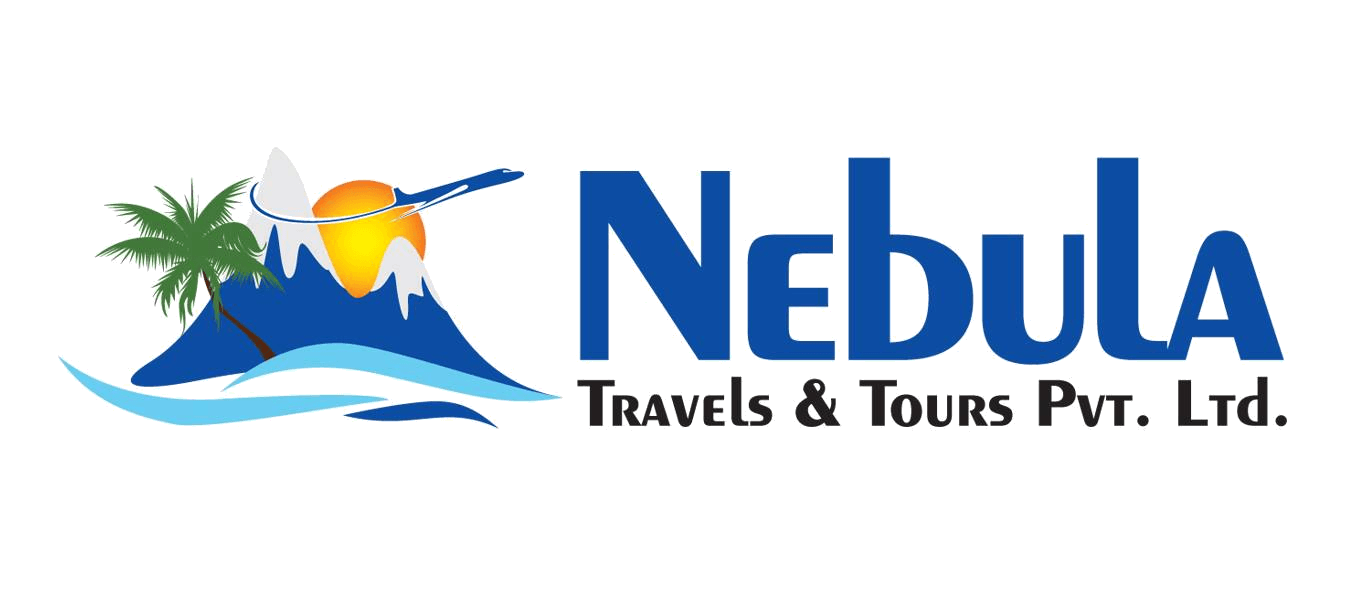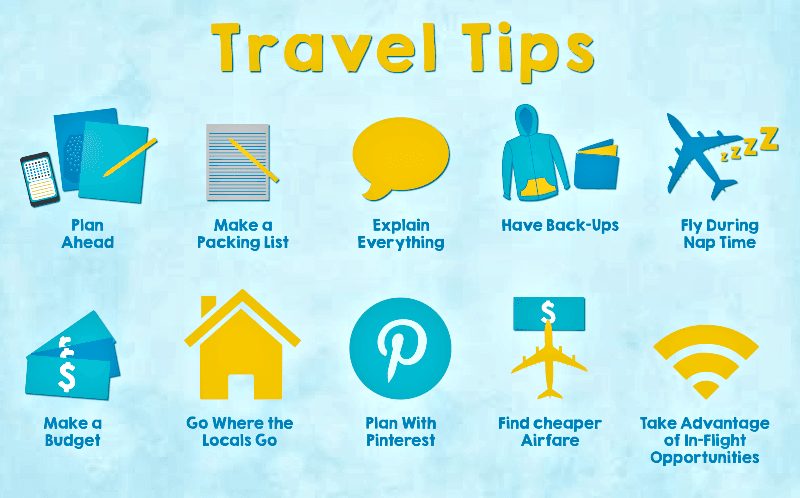In this article, we will mention ‘Travel Tips to Nepal’. It will be useful to visitors/tourists to Nepal.
Airlines – Fly to Nepal
International: Major airlines flying to Nepal including Nepal Airlines, Thai Airways, Malaysia Airlines, Malindo Air, Thai Line, Qatar Airways, Etihad Airlines, Air Arabia, Fly Dubai, Salam Air, Turkish Airways, China Southern, China Eastern, Air China, Dragon Air, Silk Airlines, Air India, Indigo Air, Oman Air, Korean Airlines, Salam Air and many more.
Domestic: Some popular airlines that are currently operating in Nepal: Buddha Air, Yeti Airlines, Saurya Air, Shree Air, and Tara Air.
Airport Taxes
For all domestic and international flight tickets, the airport taxes are included in the ticket prices so, and there is no extra cost associated with the airport.
By Air
Nepal is well-connected to the rest of the world. Besides only one international airport in Kathmandu, it currently links up with 17 international destinations. You may directly consult your local travel agent for the best fare.
By Land
Nepal shares borders with China to the north, and it divides borders East, West, and south with India. Tourists can get on-arrival visas quickly at major entry points while traveling by land. Rasuwa Gadi Border in The north with China and a couple of number of the border with India like Kakarvitta, Raxual, Bhairawaha, Pashupatinagar, etc.,
Arrivals Formalities
Upon arrival in Nepal, all visitors must complete an entry/exit form, including a customs declaration. Your copy of the form must be kept safe with your passport while in Nepal and presented to the customs/immigration officials on departure. In case you are obtaining your pre-arranged visa. You should read the below visa section while proceeding to the Visa counter upon arrival. According to immigration, office procedures change from time to time. From Nebula Travel, we will provide you with information on where to meet your guide/driver as well as offer you 24-hour emergency contact numbers in case of any difficulty.
ATM Machines
ATM for withdrawing Nepalese Rupees is widely available in major airports, shopping malls, and hotels. For most banks, there is a maximum withdrawal of 25,000 NPR, i.e., approximately USD 250 per transaction; however, several withdrawals may be made in a single day. There is also a fee of NPR 200 locally for every withdrawal. When you need it, please ask your tour guide for help when you need to locate an ATM.
Business Hours
Most businesses are open from Sunday to Friday. Government offices are open from 10:00 to 17:00 with some closing for lunch from noon to 13:00. On Saturdays as well, many retailers and travel agencies remain open.
Clothing
Comfortable lightweight clothing in natural fabrics such as cotton is advisable for traveling in Nepal. The dress code is fairly casual as in most parts of the tropics, but it is advisable to wear a full dress in the evenings against biting insects.
A lightweight raincoat carrying is good for the rainy season. For visiting northern Nepal from November to February when winter already has approached, we need warm clothes in Nepal. Visitors should not wear shorts, short skirts, or other skimpy clothing when visiting religious buildings and before entering a private home, shoes should be open.
Credit/Debit Cards
VISA/MASTER Cards are the most widely accepted, in Nepal but before making any purchase do check with the cashier.
Some places may apply to pass onto you the fee imposed on them by the credit/debit card company (approximately 3:00% to 3.5%,) depending on card type). So you may want to pay by cash instead of credit card in some instances.
Electricity
Nepal uses 220 volts (fifty cycles per second), but the plugs are not standardized. It is recommended to bring a universal plug adapter.
Entertainment
There are so many entertainment options in Nepal, particularly in Kathmandu and Pokhara, which are major touristic places. The restaurants/bars and nightclubs open until late at night / early in the morning. You can find everything from Thai, Chinese, Italian, and French as a wide variety of restaurants offer everything.
Food
Typical Nepali food which is full of flavors and not very spicy and plain and simple, varied in Pokhara and Kathmandu, though the selection is much more limited once out of these cities. While trekking in the mountains, (especially in Everest, Peak Climbing, and some parts of Annapurnas), the Tibetan with many Indian dishes are found in the plains in the south.
Health
You need to get a vaccination for yellow fever if you are traveling from a contaminated area, but no other vaccinations are required. However, visitors must be inoculated against typhoid, cholera, hepatitis A and B, Polio, and Tetanus. You are advised to buy a comprehensive Medical and Travel insurance policy before traveling in case you should evacuate from the remote mountain region.
Internet
Now the internet is our basic need, and almost every hotel provides Wi-Fi services for free. And you can also buy a Mobile sim and can use data service for the internet, which is quite cheaper.
Language
The most widely spoken language in Nepal is Nepali though there are more than 100 languages spoken locally. Other languages spoken are Maithali, Bhojpuri, and Newari. Etc. Tourists should not be troubled with communication. As such, most of the people in major cities, and tourist areas speak English.
Money
The currency in Nepal is the Nepali rupee, Banks, which are open Sunday to Friday from 10:00 to 17:00, provide satisfactory exchange rates. (most banks in the central business areas or department stores extend business hours until 18:00 or 19:00). At the Kathmandu airport arrival area, banks are offering the same rate as you will find in the city center.
Currency exchange outlets are there is a major touristic area that open till 20:00 hrs catering services for tourists. You can find ATMs in every major city, including Kathmandu, and they easily accept foreign cards. It is also accepted in Major, hotels, restaurants, and businesses.
Photography
Photo developing labs are common in Kathmandu and the rest of Nepal, providing standard print films as well as professional quality films (like slide films). In case you run out of memory these digital photos can easily be downloaded it CD-Rom. Besides, it is easy to purchase SD memory cards in all cities.
Mail-in Postal
In all main tourist sites, postcards are sold, and stamps are available from most of the hotel reception or Post offices. A postcard to Europe costs USD 2 to send and can take up to two weeks to reach the country of destination.
Religion
About 80% of people in Nepal are Hindus and the rest 10% of people are Buddhist and others as a minority like Muslim, Christian, Sikh, etc., others. Nepal has religious harmonies that existed in different religious groups.
Safety
Nepal is a safe country to visit. Always make eye contact and never leave your luggage unattained; it is a global rule. Demonstrations can occur easily, which is usually away from city centers and in isolated areas that have minimum impact on travelers who are in the tourist area.
Shopping
Textiles are possibly the best buy in Nepal and Nepali Pashmina, considered the best in the world, is very inexpensive. Other items to look out for include jewelry and gems, silverware, bronzeware, woodcarvings, lacquerware, celadon pottery, leather goods, and tailoring.
Telephone
Advice to stay in touch is to buy a local SIM Card for your mobile phone at a convenience store. They cost approximately NPR 500 and offer international dialing rates as low as 15 NPR per minute and free incoming international calls.
Time
TIME Nepal is GMT -5:45 and does not operate on a daylight-savings system.
Tipping
Tipping for excellent service is not expected but is always appreciated in Nepal. It is advisory but not compulsory to tip your drivers and guide at the end of the tour. For their troubles, the station and Hotel porters should be tipped a small amount.
Transportation
You can find a variety of transportation like hiring a motorbike, or it may be a deluxe car. Vehicles ranging from automobiles to Coaches are available at a reasonable price. The road condition of Nepal is deplorable, and it may take you several hours to cover a journey by road although it’s a short distance. Traveling by air is another main option to avoid hassle and tiring journeys by road. The local transport is not reliable as it is full of crowds and be aware of pickpocketing.
Visas
For further information, please log on to visas (15-, 30-, and 90-day) available on arrival; fill in your details online or on the spot and bring cash in US dollars. From the date of issue, a Nepal visa is valid for entry for three to six months. Children below ten years need a visa, but it is free of cost.
A Single entry visa valid for 15/30/90 days costs USD 30/50/125
In any major currency, the visa fee is payable at Kathmandu Tribhuvan International Airport or any other entry point by land.
Climates/Weather
The climate in Nepal is different from somewhere else due to the Himalayan country of the world. It has got three different levels of the geographical landscape the lowland region, the hilly region, and the Himalayan region. There are climatic variations in each region. Lowlands are pretty warm, and mountainous regions are moderate, and Himalayan regions are cold. The weather changes even several times a day in the mountains region. It may not be the same weather as forecasted as Nepal has extreme variance in weather and climate.
Autumn
Autumn is the main trekking and touring season in Nepal. From morning to evening during this season the weather is crystal clear, giving a breathtaking view of the Himalayas. While night gets cold and the days are warm in mountain areas, in major areas, the trails are always busy with a foreigner.
Winter
Winter is the quiet, low season for trekking and tours because the weather will be cold in the Himalayas. There will be heavy snowfall. However, easy and short trekking can be done at this time.
Days are short and chilling. Cultural visits and places of low altitude are famous for winter. If you still love extra adventure, you may select trekking in the Annapurna and Langtang Everest regions. The excellent thing about travel this season is less crowded with people at lodges and trails
Spring
Traveling in Nepal, the very much suitable season is Spring. It is a time when forest meadows and trees will get green which is everywhere within your surroundings. During the day and in the evening time, it might rain occasionally. In the whole forest, it is a season for blooming flowers including bush flowers and Rhododendrons. This season is also suitable for climbing peaks and high pass treks. So after autumn due to the excellent weather spring is the best choice for trekkers and climbers.
The Monsoon
The Bay of Bengal in India determines the monsoon of Nepal. The monsoon season is known as the offseason in Tourism in Nepal. And it is one major travel tip for Nepal. It is because of frequent landslides and muddy trails. But one can do treks to some area which lies in the rain shadow area. Monsoon is a lovely season to explore the forbidden kingdom of Upper Mustang, Jomsom, sacred pilgrimage destination Muktinath some of the other trails of the Annapurna region. Rich in cultural and natural heritages, Tibet and Dolpo are other places to explore during the time of monsoon.
Water
Not advisable to drink tap water in Nepal, but bottled mineral water is safe and available everywhere. In good standard hotels and restaurants Ice in drinks is generally Ok, but it is good to avoid it in country areas or street stalls.
Table of Contents


Comment (0)